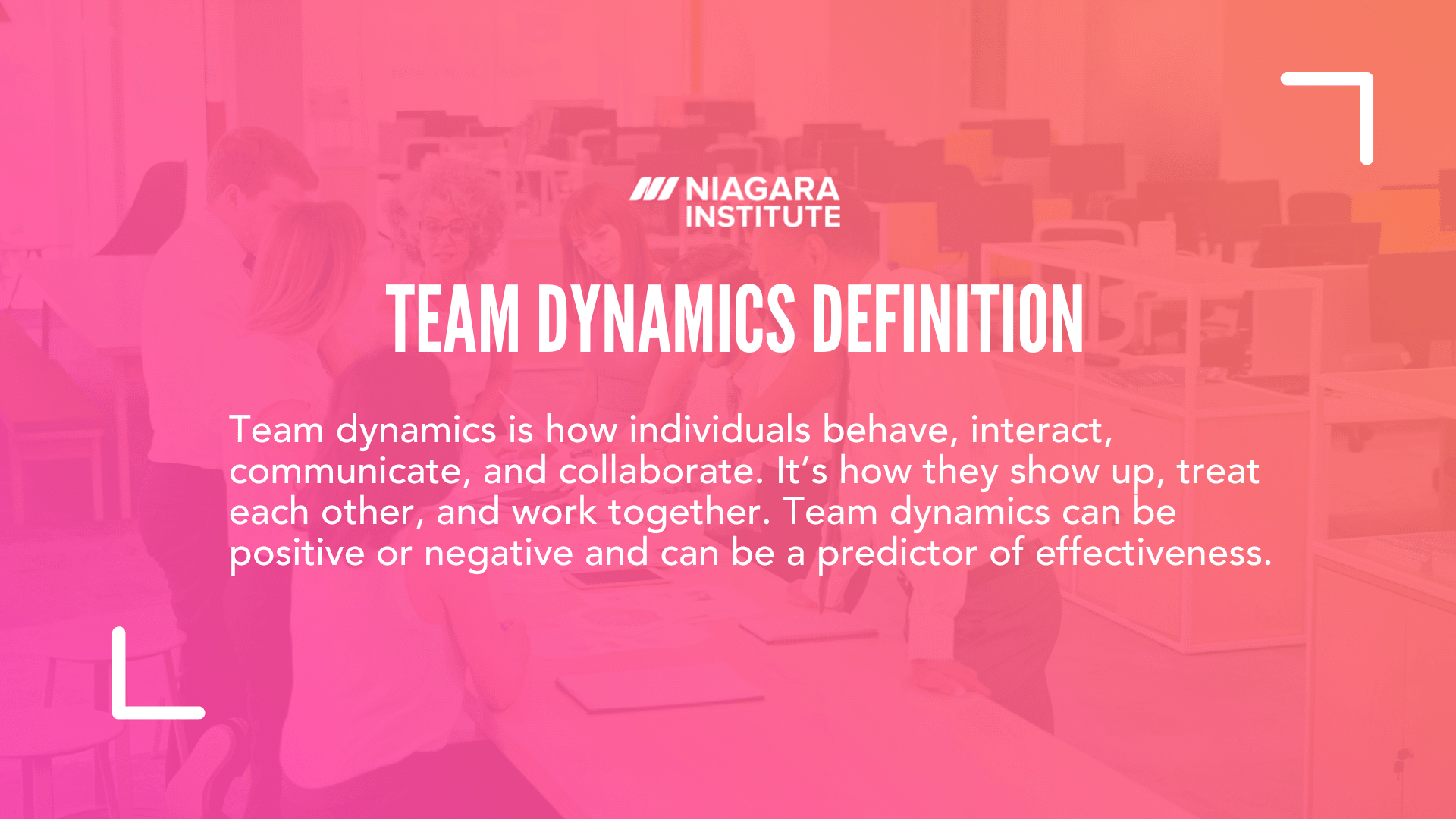6 min read
Employee Engagement: A Quick Guide for Leaders
Did you know that 70% of the variance in the level of engagement from one employee to the next can be attributed to who their direct leader is? While...

If the events of the last year have taught us anything, it’s that teamwork matters more than ever. If a team cannot be high-performing in the best of times, there is little to no hope they will rise to the challenge during VUCA (volatile, uncertain, complex, and ambiguous) times.
It’s no surprise then that the teams who were able to perform their best throughout 2020 and 2021 were those who already had a team dynamic built on trust in the workplace, respect, and collaboration. The last two years highlight the one critical action that all team leaders should take in the next year: prioritizing their team dynamics.
Team dynamics, also known as group dynamics, is how individuals behave, interact, communicate, and collaborate. It’s how they show up, treat each other, and work together. Team dynamics can be positive or negative and can be a predictor of effectiveness.
The benefits of having high-performance teams and their impact on an organization are undisputed, and group dynamics are the backbone of it all. How a team works together and gets along can make all the difference as Gallup found that high-functioning teams experience 21% greater profitability, a 41% reduction in absenteeism, a 17% increase in productivity, a 10% increase in customer satisfaction, and finally, a 20% increase in sales.
But what exactly makes a team high-functioning? It’s the right environment created by managing workplace dynamics. To prove this, McKinsey asked over 5000 executives to write down a word or two to describe the environment where they felt they had their peak experience on a team. They found three keys to great teamwork. First, the team was aligned on where they were going and how they would get there; second, high-quality interactions focused on trust, open communication, and embracing conflict; and third, an environment that fostered them to take risks, innovate, and experiment with new ideas.
Team leadership requires continuously managing workplace dynamics to create the right environment.
Here are five ways you can improve team dynamics:
Employees look to their leader for cues on the norms and behaviors they should follow to fit in. A leader’s actions speak louder than words. If the team leader cuts people off, isn’t open to new ideas, and places blame when things go wrong, team members will do the same. Also, if the leader does not call out a team member for negative behavior, others will shut down, not contribute, or pick up these bad habits.
As the saying goes, “Trust isn’t given, it’s earned.” The same goes for building trust with employees. Building trust in the workplace develops over time. Trust will begin to form between each team and the leader, by proving a trustworthy track record, and building relationships and connections. To speed up the process, find ways to have shared experiences such as a team-building session or facilitate deeper connections by encouraging team members to get to know each other beyond the work environment through casual lunches together.
For a team to be productive and focused, they need a team vision with clear goals. Clearly defined vision and goals keep the team on the same page, all contributing to meeting their accountabilities while knowing what the rest of the team is working to move closer to goal attainment. Research has shown that when goals are clearly defined, communicated, and repeatedly reinforced, there is a 33% increase in the likelihood that goals are achieved vs. those formulated in our heads.
As found in the previously mentioned McKinsey survey of executives, it is critically important to manage workplace dynamics to create an environment where employees feel safe to take risks and try out their ideas without fear of being reprimanded for failure. An HBR article outlines the six ways leaders can build a team culture of psychological safety through their communication.
Every team member brings with them unique strengths that can help propel a team towards its goals. When team leaders play to these strengths, team members are more engaged. So much so, in a study by Gallup, 67% of employees who strongly agreed their leader leveraged their strengths are engaged as compared to only 2% when employees strongly disagreed. In addition, when team members are happy and engaged with the work they’re doing, they are more committed to the team goal, bring an excellent attitude, are willing to go the extra mile, and are more collaborative and accountable.
All too often, team dynamics are left to develop organically. Instead, as we hopefully enter a time where the chaos of the last 18 months is behind us, those in team leadership roles need to be intentional about managing workplace dynamics. If you’re unsure where to start, attending a leadership development program can equip you with the skills you need to drive team performance.
.png)
6 min read
Did you know that 70% of the variance in the level of engagement from one employee to the next can be attributed to who their direct leader is? While...
.png)
7 min read
Everyone new to leading a team, whether you're a first-time manager, supervisor, or project lead, will experience a learning curve. Going from...

6 min read
Henry Ford once famously said, “Coming together is a beginning, staying together is progress, and working together is a success.” Most leaders would...